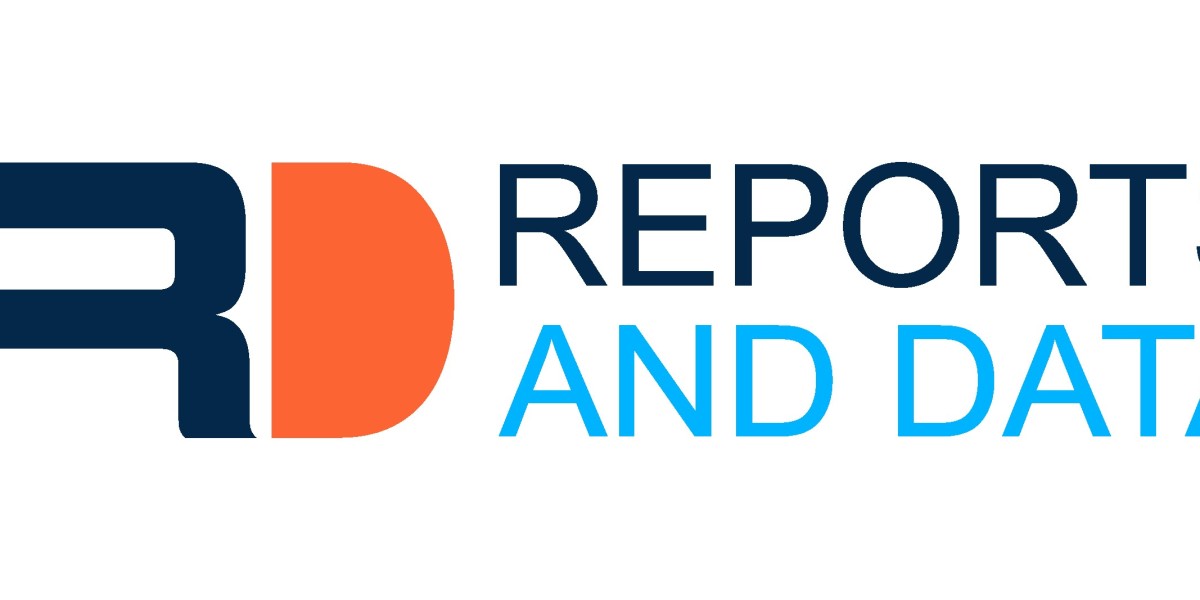Navigating the electricity market in Texas can be complex, but understanding how it works is crucial for making informed decisions. The state’s deregulated market offers a variety of options for consumers, allowing them to choose from numerous electricity providers. This article provides a comprehensive guide to help you choose the right electricity provider, tailored to your specific needs and circumstances.
Overview of the Deregulated Market
Historical Context
The deregulation of the electricity market in Texas, which began in earnest in 2002, fundamentally changed the way Texans buy and use electricity. Prior to deregulation, consumers had no choice but to buy their electricity from a single utility provider. The introduction of competition aimed to reduce prices and improve service by giving consumers the power to choose their provider from a pool of retail electric providers (REPs).
Benefits of Deregulation
Deregulation offers several benefits. Consumers now have the power to choose providers based on rates, contract terms, and additional services. This competition tends to drive down prices and improve service quality. Moreover, consumers can select plans that match their usage patterns and preferences, such as fixed-rate plans, variable-rate plans, or green energy plans. Deregulation also spurred innovation in the energy sector, leading to the development of more sophisticated and consumer-friendly products.
The Role of the Public Utility Commission of Texas (PUCT)
Regulatory Functions
The PUCT plays a critical role in overseeing the electricity market in Texas. It ensures that the market operates fairly and efficiently by setting and enforcing rules that govern the behavior of electricity providers. This includes monitoring the market for anti-competitive practices, ensuring reliable electricity delivery, and maintaining standards for customer service and safety.
Consumer Protections
The PUCT also prioritizes consumer protection. It mandates that all REPs provide clear and accurate information about their services, including pricing and contract terms. The PUCT’s website offers resources for consumers to compare providers and plans, file complaints, and access information about their rights. These protections are designed to help consumers make informed decisions and ensure they are treated fairly by their electricity providers.
Understanding Your Electricity Needs
Understanding your electricity needs is a critical step in choosing the right provider and plan. By analyzing your consumption patterns and anticipating future changes, you can select a plan that best fits your lifestyle and budget.
Assessing Your Consumption
Analyzing Past Bills
The first step in understanding your electricity needs is to analyze your past electricity bills. Look at your usage over the past year to identify patterns. Pay attention to how your usage fluctuates with the seasons and identify your peak usage periods. This analysis will help you estimate your average monthly usage and determine if a fixed-rate or variable-rate plan is more suitable for you.
Identifying Peak Usage Times
Understanding when you use the most electricity can help you choose a plan that aligns with your usage patterns. For instance, if you use more electricity during the summer months due to air conditioning, you might benefit from a plan that offers lower rates during those times. Identifying peak usage times also helps you consider energy-saving strategies to reduce your overall consumption and costs.
Future Energy Needs
Anticipating Changes in Usage
Your electricity needs might change over time due to various factors such as changes in household size, the addition of new appliances, or lifestyle changes. Consider any upcoming changes that might affect your energy consumption. For example, if you plan to purchase an electric vehicle, your electricity usage will increase significantly.
Planning for Energy Efficiency Improvements
Planning for energy efficiency improvements can also impact your future electricity needs. Investing in energy-efficient appliances, better insulation, or a smart thermostat can reduce your overall consumption. Understanding how these improvements will affect your usage can help you choose a plan that provides the best value over the long term.
Types of Electricity Plans
Electricity providers offer various plans to meet different consumer needs. Understanding the differences between these plans is essential for choosing the one that best suits your circumstances.
Fixed-Rate Plans
Pros and Cons
Fixed-rate plans offer a consistent rate for electricity throughout the contract term, which can range from a few months to several years. The main advantage of fixed-rate plans is the predictability of your monthly bill, which makes budgeting easier. However, the downside is that you may end up paying a higher rate if market prices drop.
Best Scenarios for Fixed Rates
Fixed-rate plans are ideal for consumers who prefer stability and predictability. They are particularly beneficial for those who have a consistent monthly electricity usage and want to avoid the risk of price spikes. If you live in an area with significant seasonal price fluctuations, a fixed-rate plan can protect you from high rates during peak periods.
Variable-Rate Plans
Pros and Cons
Variable-rate plans, on the other hand, have rates that can change monthly based on market conditions. The main advantage of these plans is that you can benefit from lower rates when market prices are low. However, the risk is that your rate can increase significantly without warning, leading to unpredictable bills.
Best Scenarios for Variable Rates
Variable-rate plans are suitable for consumers who are comfortable with some level of risk and who can adjust their usage in response to price changes. If you have the flexibility to reduce your consumption during high-rate periods or if you are willing to monitor market trends, a variable-rate plan can potentially save you money.
Indexed Plans
Understanding Market Indexes
Indexed plans are tied to a specific market index, such as the price of natural gas or the wholesale electricity market. These plans offer rates that fluctuate based on the performance of the chosen index. The complexity of indexed plans requires a good understanding of the underlying index and how it affects electricity prices.
Risk Factors
The primary risk of indexed plans is their unpredictability. While they can offer low rates during favorable market conditions, they can also lead to higher rates if the index experiences volatility. Consumers considering indexed plans should be prepared for potential fluctuations and should have a good understanding of the market trends influencing their rates.
Comparing Electricity Providers
Choosing the right electricity provider involves more than just comparing rates. It’s essential to consider several factors, including the provider’s reputation, contract terms, and additional services.
Price Comparison Tools
Using Online Platforms
Online platforms can simplify the process of comparing electricity providers. These tools allow you to input your zip code and electricity usage to see a list of available plans and providers. Many platforms also offer filters to narrow down your options based on rate type, contract length, and renewable energy options.
Manual Comparison Methods
For those who prefer a more hands-on approach, manual comparison involves visiting the websites of different providers and gathering information about their plans. While this method is more time-consuming, it allows you to get a detailed understanding of each provider’s offerings and customer service.
Evaluating Provider Reputation
Customer Reviews and Ratings
Customer reviews and ratings can provide valuable insights into a provider’s reliability and customer service. Look for reviews on independent websites and consider both positive and negative feedback. Pay attention to recurring issues mentioned by customers, such as billing problems or poor customer service.
Industry Awards and Recognition
Industry awards and recognition can also indicate a provider’s reputation. Providers that have received awards for customer service, innovation, or sustainability are often committed to maintaining high standards. Consider these accolades when evaluating potential providers.
Contract Terms and Conditions
Early Termination Fees
Understanding the contract terms and conditions is crucial when choosing a provider. One important aspect to consider is early termination fees, which can apply if you cancel your contract before it ends. These fees can be substantial, so make sure you are comfortable with the contract length before signing up.
Renewal Policies
Renewal policies can also affect your decision. Some providers automatically renew your contract at the end of the term, often at a higher rate. Make sure you understand the renewal terms and are aware of any notifications you need to provide if you do not wish to renew.
Renewable Energy Options
With growing concerns about climate change, many consumers are interested in renewable energy options. Texas offers several green energy plans that can help you reduce your carbon footprint.
Green Energy Plans
Benefits of Renewable Energy
Green energy plans use electricity generated from renewable sources such as wind, solar, and hydro. These plans help reduce greenhouse gas emissions and dependence on fossil fuels. Additionally, supporting renewable energy can drive further investment in sustainable energy technologies.
Comparing Green Plans to Traditional Plans
When comparing green energy plans to traditional plans, consider the price premium often associated with renewable energy. While green plans can be slightly more expensive, the environmental benefits and potential for long-term savings as renewable technology improves can be worth the additional cost.
Solar and Wind Energy
Home Solar Options
Installing solar panels at home is a popular way to harness renewable energy. Solar panels can significantly reduce your electricity bills and even allow you to sell excess power back to the grid. However, the initial investment is substantial, and not all homes are suitable for solar installations.
Community Wind Programs
Community wind programs offer another way to support renewable energy. These programs allow consumers to purchase a share of a wind farm and receive a credit on their electricity bill for the energy produced. This option is ideal for those who want to support renewable energy but cannot install solar panels at home.
Incentives and Rebates
Federal and State Programs
Various federal and state programs offer incentives and rebates for using renewable energy. These programs can significantly reduce the cost of installing solar panels or participating in green energy programs. Research available incentives to take full advantage of these opportunities.
Utility-Specific Incentives
Some utility companies also offer incentives for renewable energy. These can include rebates for installing energy-efficient appliances or participating in demand response programs. Check with your local utility provider to see what incentives are available.
Billing and Payment Options
Understanding your electricity bill and the available payment options is essential for managing your finances effectively. Different providers offer various billing and payment options to suit different preferences.
Understanding Your Bill
Reading and Interpreting Charges
Your electricity bill includes several components, such as the cost of electricity, delivery charges, and various fees and taxes. Understanding these charges is crucial for managing your energy costs. Take the time to read your bill carefully and understand each line item.
Common Fees and Surcharges
Common fees and surcharges can include late payment fees, reconnection fees, and charges for exceeding your usage limit. Being aware of these potential costs can help you avoid unexpected charges and manage your bill more effectively.
Payment Plans and Assistance Programs
Budget Billing
Budget billing is an option that allows you to spread your electricity costs evenly over the year. This can help you avoid high bills during peak usage months and make budgeting easier. However, you may end up paying more in the long run if your usage decreases significantly.
Payment Assistance Programs
For those who struggle to pay their electricity bills, many providers offer payment assistance programs. These programs can include payment plans, energy assistance funds, and discounts for low-income households. Check with your provider to see what assistance options are available.
Online vs. Paper Billing
Advantages of Online Billing
Online billing offers several advantages, including convenience, reduced paper waste, and easy access to your billing history. Many providers also offer incentives for choosing online billing, such as discounts or rewards.
Security Considerations
While online billing is convenient, it’s essential to consider security. Ensure that your provider’s website is secure and that you use strong, unique passwords for your accounts. Monitor your bills regularly to detect any unauthorized charges or changes.
Customer Service and Support
Good customer service is essential for resolving issues and ensuring a positive experience with your electricity provider. Evaluate customer support options carefully when choosing a provider.
Evaluating Customer Support
Availability and Responsiveness
The availability and responsiveness of customer support can vary significantly between providers. Look for providers that offer 24/7 customer support and have a reputation for quick response times. Good customer support can make a significant difference when dealing with billing issues or service interruptions.
Multichannel Support Options
Providers that offer multiple support channels, such as phone, email, live chat, and social media, make it easier for you to get help when you need it. Consider your preferred method of communication and choose a provider that offers support through that channel.
Handling Disputes and Complaints
Common Issues and Resolutions
Common issues with electricity providers can include billing disputes, service interruptions, and contract misunderstandings. Knowing how to handle these disputes and what steps to take can help you resolve issues quickly. Start by contacting customer support and escalating the issue if necessary.
Escalation Procedures
If you cannot resolve an issue through regular customer support channels, knowing the escalation procedures can be helpful. This might involve contacting a supervisor, filing a formal complaint with the provider, or reaching out to the PUCT for assistance.
Service Reliability and Outage Response
Provider Response Times
Service reliability and quick outage response are critical factors to consider. Providers with a reputation for fast response times and effective communication during outages can help minimize the inconvenience of power interruptions.
Communication During Outages
Effective communication during outages is essential. Look for providers that offer outage maps, text alerts, and regular updates to keep you informed about the status of repairs and estimated restoration times.
Switching Providers
Switching electricity providers can be a straightforward process if you know what to expect. Understanding when and why to switch, as well as the steps involved, can help you make a smooth transition.
When and Why to Switch
Identifying Triggers for Change
Several factors can trigger the need to switch providers, including rising rates, poor customer service, or the availability of better plans. Regularly reviewing your electricity plan and comparing it to other options can help you identify when it’s time to switch.
Benefits of Switching
Switching providers can offer several benefits, including lower rates, better customer service, and more suitable contract terms. If you find a provider that offers a better deal or services that better meet your needs, switching can help you save money and improve your overall satisfaction.
The Switching Process
Steps to Switch Providers
The process of switching providers typically involves selecting a new provider, signing up for a new plan, and notifying your current provider of the switch. Many new providers will handle the switch for you, ensuring that there is no interruption in service.
Avoiding Service Interruptions
To avoid service interruptions during the switch, ensure that your new service starts immediately after your current service ends. Confirm the start date with your new provider and monitor your service closely during the transition.
Post-Switch Considerations
Monitoring New Service
After switching providers, monitor your new service closely. Check your first few bills to ensure that the rates and terms match what was promised. Contact customer support if you notice any discrepancies or have any issues with your new service.
Reviewing the First Bill
Reviewing your first bill from your new provider is crucial. Ensure that all charges are correct and that there are no unexpected fees. If everything looks good, you can enjoy the benefits of your new plan. If there are issues, address them promptly with your new provider’s customer support.
FAQs
What is the main advantage of a fixed-rate electricity plan?
Fixed-rate plans offer the predictability of a consistent monthly rate, making budgeting easier and protecting against price spikes.
How can I compare electricity providers effectively?
Use online comparison tools to compare rates and plans, and read customer reviews and ratings to evaluate provider reputation and service quality.
Are there any benefits to choosing a green energy plan?
Green energy plans help reduce your carbon footprint and support the growth of renewable energy technologies, though they may come with a slight price premium.
What should I do if I experience a dispute with my electricity provider?
Contact customer support to resolve the issue, and if necessary, escalate the complaint to a supervisor or the Public Utility Commission of Texas.
For more information, visit us online or contact your local electricity providers directly.



